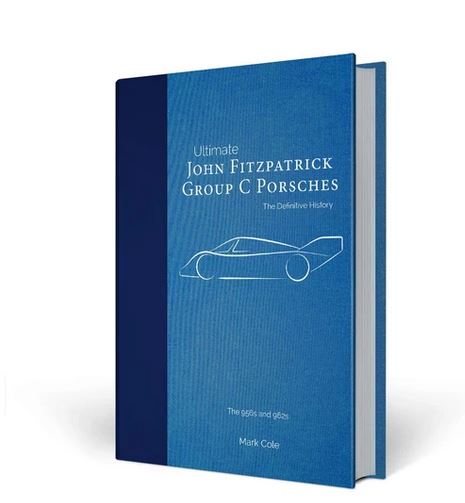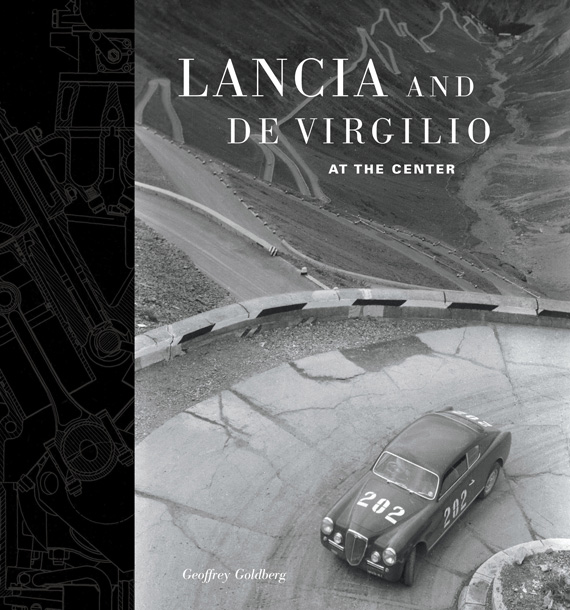
In the years following the Second World War, Lancia was the most innovative automotive company in Italy, if not in the world. The Lancia cars were technically advanced, with an elegant and competitive design on the track. For more than four decades, Francesco de Virgilio was one of the primary figures in the history of Lancia. De Virgilio entered the company as a young engineer in 1939, becoming a member of the Lancia family, when he married the niece of the founder Vincenzo Lancia, in 1947. In Lancia and de Virgilio, the author Geoffrey Goldberg examines the life and career of De Virgilio from multiple perspectives. Drawing on a large number of original documents, technical drawings and photographs from the archives of the De Virgilio family, Goldberg reveals the essential role of De Virgilio in the projects that defined Lancia during its best years in the 1940s and 50s. These include the development of the first production V6 engine, launching and improvement of the Lancia Aurelia, and the management of the short racing program of the company, which produced the classic D50 Formula One car. In addition to engineering and competitions, De Virgilio was directly involved in the events that effected the management and position of Lancia in the Italian automotive industry. In 1955, the family released its control of the company, leading to its eventual acquisition by Fiat in 1969. Through all these upheavals, De Virgilio continued to experiment and innovate, working on multiple projects, from diesel engines for trucks to the first versions of the rally car Stratos in the 1970s. Whatever the assignment, his persistent search for excellence remained a constant element defining Lancia, up to his departure from the company in 1975. Despite his technical successes and his popularity within the company, De Virgil’s contributions have been widely neglected to date.
Produced with the support of the RevS Institute for Automotive Research, Lancia and de Virgilio is the product of more than six years of meticulous research. The book is illustrated with hundreds of unpublished photographs that depict the images of Francesco de Virgilio at work, on the track and at home with his family, as well as dozens of drawings, projects and other finds. In addition to this abundance of details and information, the book, also captures the vibrant spirit of Italian, culture and society during the post-war period. Lancia and de Virgilio provides unique insight into both automotive and social history. The book was greatly appreciated by enthusiasts: it won several awards, including the Cugnot Award of the Society of Auto Historians for the best book of the year. It was also reviewed by the New York Times and the Republic, a rather exceptional event for a book on a company and its history already seventy years in the past.
This limited edition reprint is an opportunity not to be missed for those who did not secure the first edition in 2014.
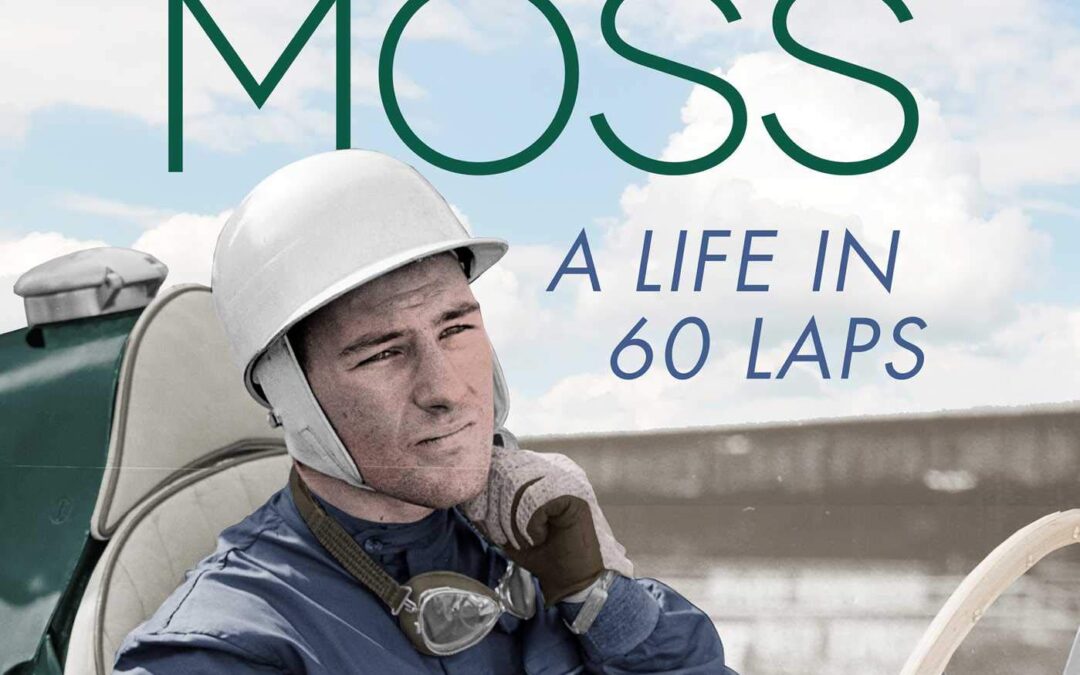
Told in 60 brief chapters, Williams builds a fascinating and revealing portrait of a driver who was a hero to millions. As the long years of war began to recede, sport in Britain was getting moving again and there was a need for heroes. Denis Compton and Stanley Matthews were in their pomp, playing to packed houses. But Stirling Moss was a fresh face, just 17 years old when he first emerged in 1947. Too young to have served and been scarred by the war, he was soon revealed to possess not only an unearthly degree of skill but the qualities of courage and resolution noted in the generation that fought in the air and on land and sea. Their youth had been stolen; his was new and unspoiled.
The Boy explains how and why he came to occupy such a unique place in the esteem and the affections of the nation. Why him, rather than some of his contemporaries, such as Mike Hawthorn and Peter Collins, who shared a role in the rise of Britain as a power in international motor racing? Moss may never have been world champion, but he created a remarkable and enduring legacy, and Williams brilliantly shows just how he did it.
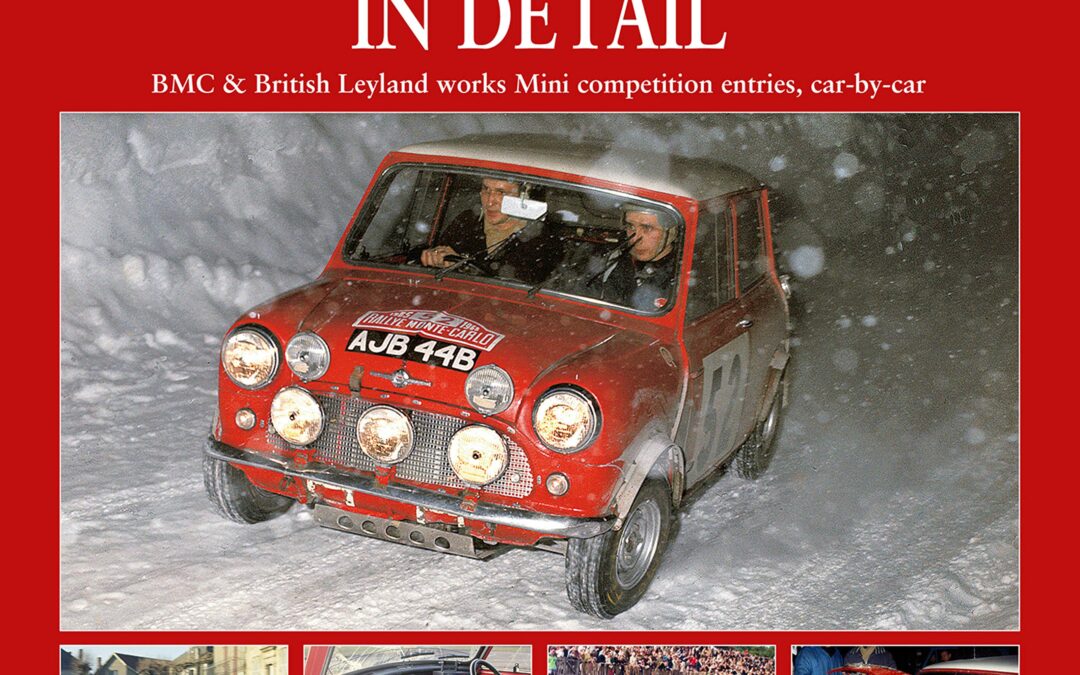
The works Minis had a long and distinguished competition history between 1959 and 1970, when British Leyland bosses closed the Abingdon Competition Department. The car started its competition career chasing class awards with the diminutive 850cc Mini, but once race car designer John Cooper persuaded BMC that they should build a hot version, the Mini Cooper was born and things moved up a gear.
With the introduction of the Mini Cooper S, the car soon became a world beater. Winning the 1964 Monte Carlo Rally in the hands of Paddy Hopkirk was a watershed moment which the Abingdon team repeated three times. During that 11-year period, 77 works Minis were built, competing in more than 300 events, most of them international rallies. The 1969 season, when the works Minis went racing, is also covered, along with the rallycross events.
Works Minis in Detail covers each one of those 77 cars which, in their distinctive red and white paintwork, were a force be reckoned with wherever they competed. Build details of every car are provided, drawn from factory build sheets, with information also on when cars were reshelled and identities swapped. The details of the events entered and the drivers are the result of analysing hundreds of contemporary race and rally reports.
The result is the most in-depth study of the works Minis ever published, made possible by years of research by Robert Young, a lifelong Mini enthusiast. As the Mini Cooper Register’s ex-works registrar, club chairman and for many years archivist, he is well placed to write with authority. A proud owner himself, he has intimate knowledge of the little red cars.
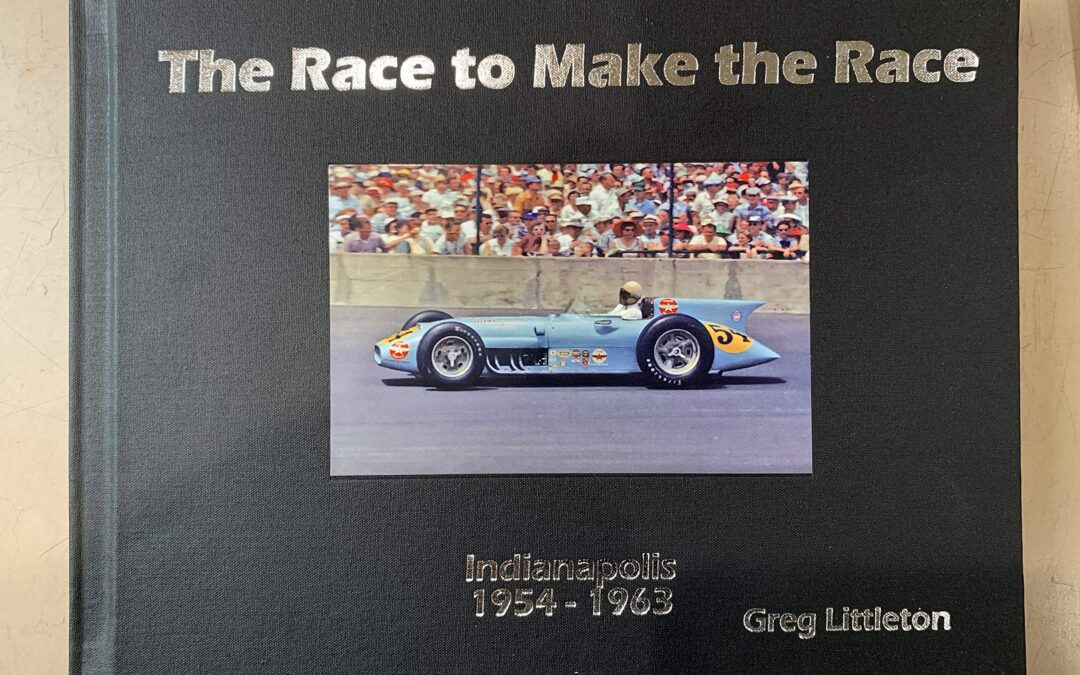
SIGNED
In his new book “The Race to Make the Race” Littleton chronicles a 10-year span (1954-1963) which was the peak roadster years at Indy and records what went on for every qualification attempt during this time period and each lap speed even if the attempt was yellow flagged. There is no mention of the races themselves as those results have been well-documented over the years.
Today’s 500 is lucky to attract 33 cars some years, but there was a time when the 500 really did have an actual Month of May and sometimes more cars went home than made the starting fields. Littleton’s book records by the actual time of day, weather conditions, attendance and all of the other happenings both on the track and in the Garage Area.
There are a lot of details in the book that you will never see anywhere else today. During the years in question the drama around the efforts to find speed just to qualify were often nearly as interesting as the actual race.
“While I was doing the Roadsters book I got the idea about doing a book on qualifications for the Indy 500,” said Littleton. “I got some qualifying information from the Speedway records when I was doing my first book. It was fun to do. I wanted to give the story on the successes and struggles each driver went through to try and make the Indianapolis 500 those years. The Bartholomew County Library was a big help in assisting me. They were able to get the microfilms from the Indiana State Library. I probably made 75 trips down to the local library to gather the information I needed.”
Littleton also mentioned two of the area’s standout racers at Indianapolis. Larry Crockett of Columbus who was the fastest rookie qualifier in 1954 and in the 500-mile race that year he ended up being the top finishing rookie over Pat O’Connor of North Vernon.
Littleton said Crockett, who died in a racing accident in Pennsylvania in 1955 right before he would have attempted to make his second Indianapolis 500, would have been a candidate to win the Indy 500.
“He was so young when he was starting out,” he said. “Nobody knows how his career would have turned out. If he had three or four years on him then I could have given you a better estimate on him. He was fast enough. There were some brave souls in 1954 and they said Larry Crockett was the best young driver in the United States.”
Like Crockett, Littleton gave his assessment on O’Connor who was killed in a first-lap accident in the 1958 race if he too could have won the Indy 500.
“Pat O’Connor definitely could have been an Indy 500 champion,” he said. “The legend of Pat O’Connor just keeps growing around here. You talk to guys and there is no doubt he was a natural. He was so smooth; everything came easy for him. He had the right head for it. He knew the days the car was good enough and the days it wasn’t.”
In documenting every lap of time trials during the 10-year span he chronicled there was one driver that stood out when writing the book was a young driver named Bob Scott in 1954.
“He had a good car in ’54 and on the fourth and final day of qualifying he was not in the show yet,” Littleton explains. “He jumped into a car that was not considered top-of-the-line equipment. He put three good laps together and they were going to be good enough to put him in the race, all he needed was one more consistent lap and he was in, but before he took the checkered flag he pulled into the pits and thus he didn’t qualify for the starting field. He apparently didn’t look at the flagman. He never did say why he pulled off.”
If Littleton had to pick a Mount Rushmore of Indy 500 champions his list would include: Bill Vukovich, A.J. Foyt, Wilbur Shaw and Al Unser Sr. Littleton also gave mention to 1963 winner Parnelli Jones.
“He was probably the least successful great race driver,” he said. “He would consistently beat Foyt in sprint cars, but he only won Indy once.”
On the sale last month of the Indianapolis Motor Speedway to Roger Penske, Littleton had this to say.
“Who else cares enough about racing and has the business acumen than Roger Penske?,” he asked. “He has everything that can make it work. Every decision he makes you may not like, but he has the best interest of the speedway in mind.”
Penske becomes the fourth owner of the track. The Hulman family had owned the track for 74 years.

The New York Times bestselling author of Bitter Brew chronicles the birth and rise to greatness of the American auto industry through the remarkable life of Harley Earl, an eccentric six-foot-five, stuttering visionary who dropped out of college and went on to invent the profession of automobile styling, thereby revolutionized the way cars were made, marketed, and even imagined.
Harleys Earl’s story qualifies as a bona fide American family saga. It began in the Michigan pine forest in the years after the Civil War, traveled across the Great Plains on the wooden wheels of a covered wagon, and eventually settled in a dirt road village named Hollywood, California, where young Harley took the skills he learned working in his father’s carriage shop and applied them to designing sleek, racy-looking automobile bodies for the fast crowd in the burgeoning silent movie business.
As the 1920s roared with the sound of mass manufacturing, Harley returned to Michigan, where, at GM’s invitation, he introduced art into the rigid mechanics of auto-making. Over the next thirty years, he functioned as a kind of combination Steve Jobs and Tom Ford of his time, redefining the form and function of the country’s premier product. His impact was profound. When he retired as GM’s VP of Styling in 1958, Detroit reigned as the manufacturing capitol of the world and General Motors ranked as the most successful company in the history of business.
Knoedelseder tells the story in ways both large and small, weaving the history of the company with the history of Detroit and the Earl family as Fins examines the effect of the automobile on America’s economy, culture, and national psyche.
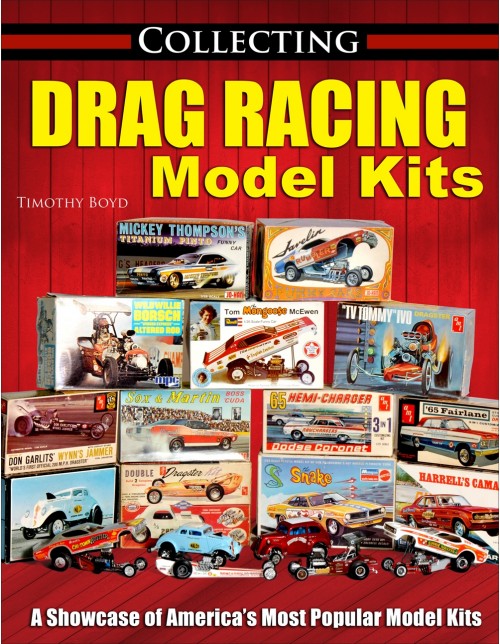
Relive the golden age of drag racing through this exhaustive volume covering the best drag racing model kits of the era.
Model expert Tim Boyd, author of Collecting Muscle Car Model Kits, turned his attention to the fantastic drag racing model kits available from the late 1950s through today. Some racing model kits were actually 3 in 1 kits, where the builder assembled the drag-race version of the car in lieu of the street or custom version. Boyd starts by covering the options, collectability, variety, availability, and value of these wonderful kits and then concentrates on the highly detailed drag racing-only kits that became available starting in the mid-1960s through today. He also shows the differences between original kits, older reproduction kits, and new reproduction kits that many enthusiasts find at swap meets and through online sources today.
Many of these great kits were from the 1960s, an era when building model kits was a widely popular, serious hobby, similar to video games today. Not only was it fun to build the kits but it was also a great way to learn about all the different race classes and categories because there wasn’t regular TV or online coverage during that era. The artwork on those kits was fantastic, and many collectors today seek original kits largely because of it.
The classes of racing covered are Gassers, Rail Dragsters, Stocks and Super Stocks, Funny Cars, Pro Stocks, Exhibition Racers, and more. Drag racing cars that never actually existed but were created by model companies are also covered.
Nostalgia drags are some of the most popular events around the country today. People can’t get enough of these old race cars that were built in an era when variety, innovation, and home building ruled the day. This book is great for modelers in general, model-kit collectors, and drag-racing fans young and old alike.
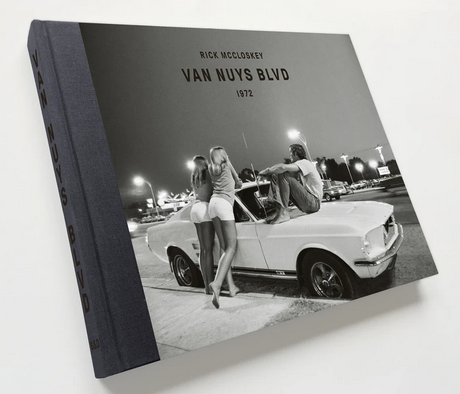
Limited Edition Re-Print
AMERICAN CAR CULTURE AT ITS VIBRANT BEST
Wednesday night was “Cruise Night” in the San Fernando Valley, a suburb of Los Angeles. The stretch on Van Nuys Boulevard between Ventura Boulevard on the southern end, and well past Sherman Way to the north, teemed with kids and cars from all over Southern California on Wednesday nights. It was a terrific place to both see and be seen, and to show off your ride as well.Gas was cheap, times were great, and the boulevard hummed with life during the evenings. Even the «draft» during the Vietnam War did not dampen the street scene. By 1972, the year Rick McCloskey went to Van Nuys to shoot his series of photographs, the culture on the boulevard had become an amalgamation of divergent lifestyles, automobiles – used and new – and some very different «looks» and styles. There were «tribes» of van kids – surfers mostly – low-riders, muscle cars, street racers, Volkswagen owners, and many more, and of course, thousands of young people. The idea of «retro» had arrived as well, with some young people emulating the look and style of the 1950s. Of course, there were individuals who had to be there for work. In making these images, Rick McCloskey set about portraying the young people, their cars, and the iconic background settings. Today, young people no longer have anything similar to the past boulevard gathering places, where so many people can enjoy «just being there» together. Akin to starlight still trickling in from a long vanished world, these photographic images are what we have left
Hardcover
132 pages,
118 duotone plates with a text by the photographer
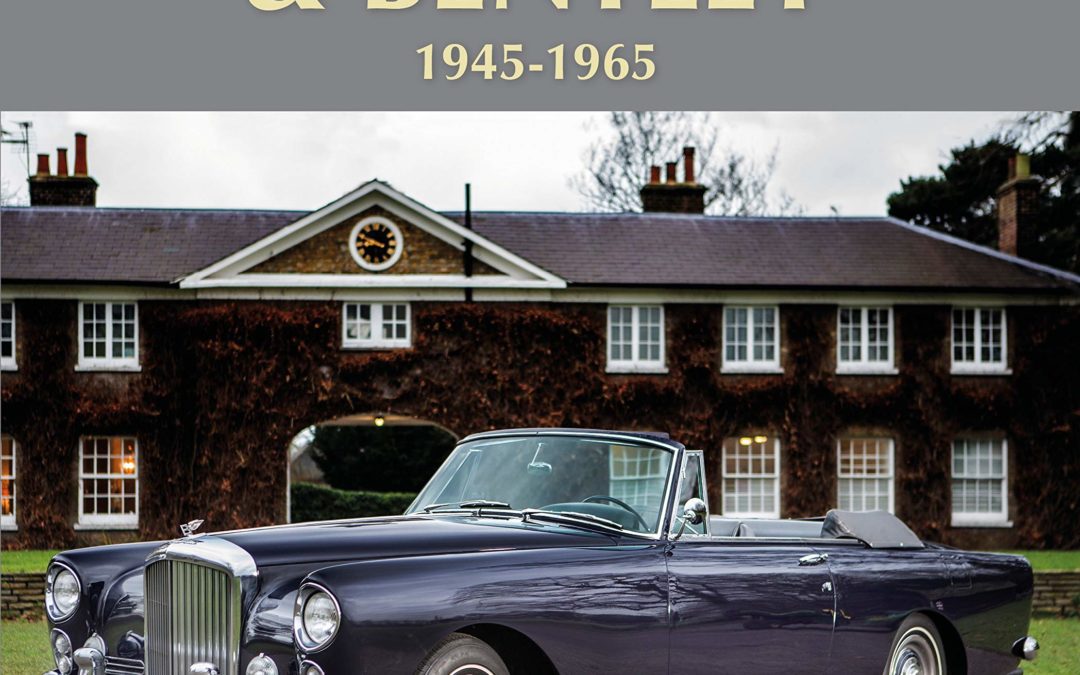
Rolls-Royce and Bentley relied upon standardised body designs after 1945, but for the next two decades both marques also supplied chassis frames separately, and it was possible to have these clothed with coachwork by bespoke coachbuilders like, for example, Mulliner, Park Ward and James Young in Britain, or Graber, Farina and Franay in Europe.
Many buyers took this route, and this highly illustrated book bears witness to the wide variety of styles that were built in this fascinating period. Chassis number lists for each coachbuilder, both in Britain and overseas, identify their creations, to make this a comprehensive and essential companion for anyone interested in Rolls-Royce and Bentley in the postwar era. Coachwork on Rolls-Royce and Bentley, 1945-1965 joins the author’s recent work Coachwork on Derby Bentleys 1933-1940 in our list.

Ton Up! A Century of Café Racer Speed and Style focuses on the story of the ton-up boys and their café racers. But it’s much more than just that. Illustrated with historic and modern photos and featuring a text by one of the world’s motorcycle historians, it’s really the story of motorcycle speed and style evolved from the early 1900s right through today.
Cafe racers are most associated with the young, rebellious rock-and-rollers of 1960s Britain. These riders created the quintessential café racers—fast motorcycles customized to resemble the racing bikes of the period. They were called “café racers” because their riders raced on public roads, from one café to the next. The goal was to do “the ton” (exceed 100 miles per hour) on these runs, which led to their designation as “ton-up boys.”
Today, ton-up culture is more popular than ever and recognized worldwide with a following of young and long-time riders alike.With Ton Up!, enjoy a scenic ride through the history of this vibrant scene.
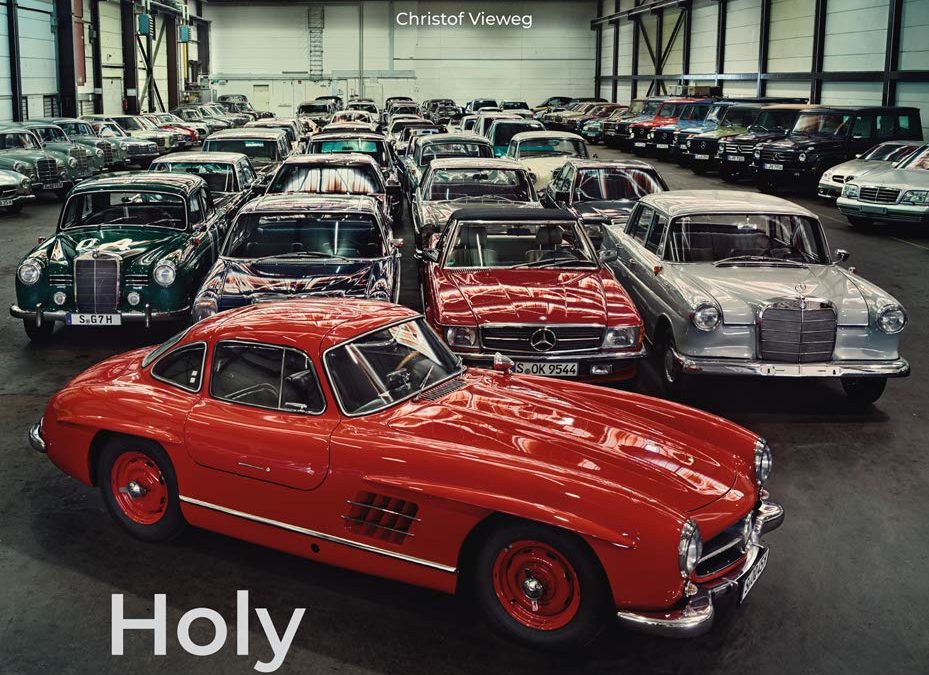
A thrilling photographic account of the treasure trove of cars kept by the Mercedes-Benz Museum in Stuttgart that are not currently on display to the public
The Mercedes-Benz Museum in Stuttgart is one of the largest and most visited industrial museums in the world. But the 160 or so automobiles on display are only a small part of the shiny chrome treasures that form the Mercedes-Benz Classic vehicle collection. Another 1,000 historical models are ‘parked’ in secret places outside Stuttgart – these secret places are called the ‘Holy Halls’.
This collection is the treasure trove of the brand. It has existed since 1923 and offers a comprehensive overview of the model history of Mercedes-Benz. Cars with special technology and equipment are stored here, as are the silver arrows of Caracciola, Lang and Fangio, the Pope’s carriages, the state cars of the young Federal Republic of Germany or Mercedes models that became collectors’ items due to their prominent previous owners. Some of these exhibits are well protected and waiting in special wooden boxes for their next use at exhibitions, fairs, events or classic car races. Others stand next to each other as silent witnesses of the past. Each time a model is modified, the collection is extended by the last vehicle of the discontinued series, which experts believe will be one of tomorrow’s classic cars.
The ‘Holy Halls’ are not open to the public; enquiries from editorial offices and TV teams have often been rejected. But, during the years 2016 to 2018, almost all the vehicles of the Mercedes collection were photographed. Thus, a unique photographic collection was created, the automobile history from more than ten decades; many of the previously unpublished photographs are exclusively available here in this book. In addition, Mercedes-Benz Classic agreed to open the ‘Holy Halls’ for an external photo team and provide information about the car models stored there.
For the first time, it has been possible to produce a fascinating illustrated book with panoramic and detailed shots from the ‘halls’, and lively photo reports on cars that tell stories – from the first Benz batting motor car to the latest Formula 1 racing car. Equally thrilling are the stories of the unique specimens and prototypes that are stored in the ‘Holy Halls’: Mercedes models that never went into production are presented for the first time. The stories about the selected automobiles of the vehicle collection are supplemented by historical recordings from the Mercedes-Benz Classic archive.
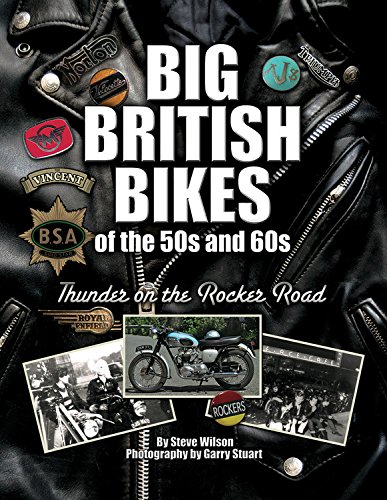
In the 1950s and ’60s the British motorcycle industry was at its postwar peak, with its large-capacity high-performance bikes in strong demand all over the world. AJS/Matchless, BSA, Norton, Royal Enfield and Triumph were all making 100mph-plus big twins, with the king of them all, at least into the 1950s, being the mighty1000cc Vincents, while among the ton-up singles were the BSA Gold Star and the Velocette Venom and Thruxton. In this book veteran motorcycle writer Steve Wilson reviews the top-of-the-line bikes of all these manufacturers, first giving an introduction to the motorcycling scene in the period, with a particular look at the emergence of the Rockers, the black-leather too-fast-to-live-too-young-to-die bikers who developed a culture all their own, inspired indirectly by Marlon Brando behaving badly on his Triumph Thunderbird in the banned-in-Britain 1953 movie The Wild One. Then the motorcycle makers are dealt with alphabetically, with their big bikes described in detail and their performance, handling, strengths and weaknesses discussed. In addition to a wide selection of archive photographs, specially commissioned colour photography features examples of the outstanding bikes of the period: AMC/Matchless CSR 650 twins and their Norton Atlas-engined ‘Hybrid’ siblings, BSA A7SS 500, Gold Star singles, AIO Super Rocket and Rocket Gold Star 650 twins, Norton SS 500/600/650 twins, Velocette Venom and Thruxton 500, Royal Enfield Constellation 700 twin, Triumph pre-unit 500 and 650 twins and unit Bonneville 650, and finally the Vincent 1000 vee-twin.
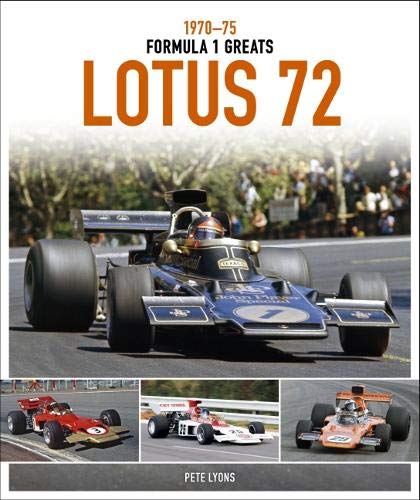
This book, the first in Evro’s new Formula 1 Greats series, covers one of the most revered Formula 1 cars ever made. Introduced in 1970, the wedge-shaped Lotus 72 competed for six seasons, winning 20 World Championship Grands Prix, two Drivers’ titles (for Jochen Rindt in 1970 and Emerson Fittipaldi in 1972) and three Constructors’ titles (in 1970, 1972 and 1973), racing first in Lotus’s evocative red, white and gold livery, then the equally eye-catching black and gold of the John Player Special period. Pete Lyons, Autosport’s renowned Formula 1 reporter for part of the Lotus 72 era, explores the car’s entire race-by-race career in his insightful commentary accompanying a magnificent array of more than 300 photos.
- The 1970 season: after troubled early development, the 72 finally took over from the long-serving 49, its four consecutive race wins enough to secure the World Championship for Jochen Rindt, posthumously after his death during practice for the Italian Grand Prix.
- The 1971 season: with promising youngster Emerson Fittipaldi elevated to team leader after Rindt’s death, great things were expected of the 72’s second season but it proved to be winless.
- The 1972 season: now in black and gold John Player livery, the 72 became far more competitive and Fittipaldi’s four Grand Prix victories made him World Champion.
- The 1973 season: Ronnie ‘SuperSwede’ Peterson joined Fittipaldi to form a dream team and together they won seven races, but because Lotus’s spoils were divided between the two drivers Jackie Stewart was able to come through to become World Champion.
- The 1974 season: still the 72 soldiered on, now as the fall-back car after its successor, the 76, failed to deliver; partnered by Jacky Ickx, Peterson won three Grands Prix.
- The 1975 season: well beyond its sell-by date, the 72 did a final season but by now it was far from effective, with Ickx’s second place in the tragic Spanish Grand Prix its best result.
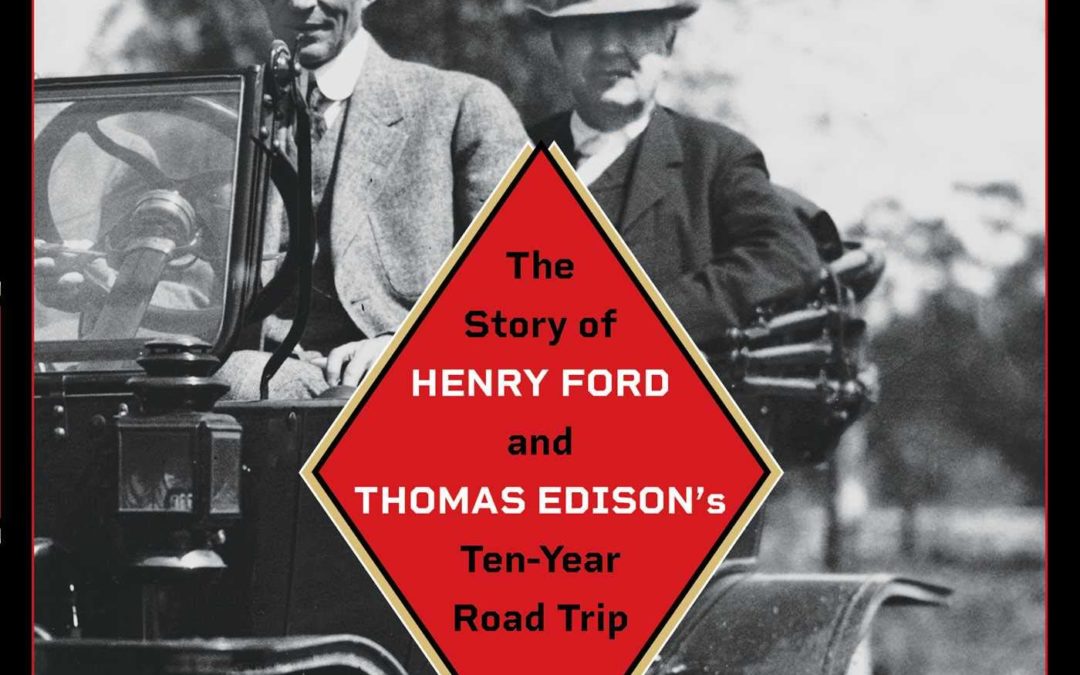
The fascinating story of two American giants—Henry Ford and Thomas Edison—whose annual summer sojourns introduced the road trip to our culture and made the automobile an essential part of modern life, even as their own relationship altered dramatically.
In 1914 Henry Ford and naturalist John Burroughs visited Thomas Edison in Florida and toured the Everglades. The following year Ford, Edison, and tire maker Harvey Firestone joined together on a summer camping trip and decided to call themselves the Vagabonds. They would continue their summer road trips until 1925, when they announced that their fame made it too difficult for them to carry on.
Although the Vagabonds traveled with an entourage of chefs, butlers, and others, this elite fraternity also had a serious purpose: to examine the conditions of America’s roadways and improve the practicality of automobile travel. Cars were unreliable and the roads were even worse. But newspaper coverage of these trips was extensive, and as cars and roads improved, the summer trip by automobile soon became a desired element of American life.
In The Vagabonds Jeff Guinn shares the story of this pivotal moment in American history. But he also examines the important relationship between the older Edison and the younger Ford, who once worked for the famous inventor. The road trips made the automobile ubiquitous and magnified Ford’s reputation, even as Edison’s diminished. The automobile had come of age and it would transform the American landscape, the American economy, and the American way of life.
Guinn brings to life this seminal moment when a new industry created a watershed cultural shift and a famous businessman became a prominent political figure. The Vagabonds is a wonderful story of two American giants and the transformation of the country.
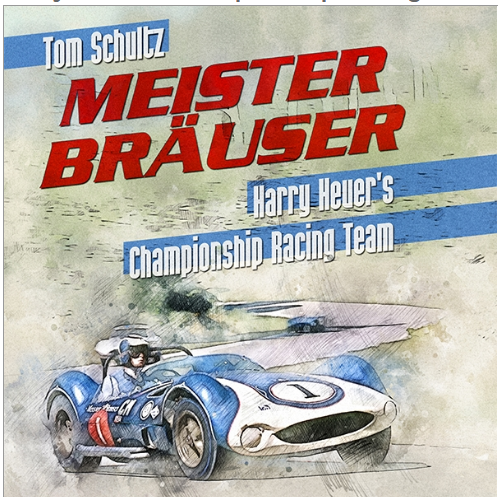
In early 1959, young Harry Heuer, Executive Vice President of the Peter Hand Brewery, Chicago, Illinois, caught the racing bug. He immediately bought a race car and entered it in the May 1959 Meadowdale USAC professional race. At the same time, Reventlow Automobiles Inc., builder and racer of the Scarab, put both of its 1958 race-winning Scarabs up for sale. Heuer bought one, hired Augie Pabst to drive it, and an unprecedented run of wins and championships resulted.
An unforeseen chain of events later in 1959 resulted in the newly-formed Meister Bräuser Racing Team purchasing the second of the two Scarabs, which meant that Heuer had what were arguably the two best sports racing cars in the country united in one team. The results were immediate. A championship in 1959, and a streak of race wins throughout 1960 that earned a second championship. Over the next three seasons three more championships were garnered.
Besides its on-track successes, Meister Bräuser was a leader in promoting team identity. It was one of the first to utilize an enclosed tractor trailer rig to, not only transport the cars, but also to be a rolling at-track machine shop. They owned a small pit tractor to tow the cars around the paddock and had support passenger vehicles available for the crew. All the vehicles were painted in the team colors of dark metallic blue trimmed with white and accented by red pin stripes. The team members were outfitted in matching uniforms and were often flown to the races rather than left to drive cross-country.
The Team ran for only five years, but in that time set a mark for professionalism, wins and championships. They raced hard and played hard. This book recounts the history of the team with their triumphs and their failures. We think that you will find it enjoyable reading, and a valuable look into American racing in the early 1960s

When Arlington National Cemetery refused to accept my grandmother’s last request to be laid to rest there, I refused to let her legacy as a veteran die along with her.
My grandmother, Elaine Danforth Harmon, flew as a pilot with the Women Airforce Service Pilots (WASP) of World War II. Despite being part of the first group of women to fly for the United States Army, the WASP remained officially unrecognized as members of the military due to discriminatory thinking about gender on Capitol Hill and beyond. Women flying planes? Too progressive for the World War II era.
When I was young, I thought of my grandmother’s trips to accept awards, or to visit the White House, or to give lectures about her time in the service, as her hobby. I knew what she had done and I knew that in the 1970s they had lobbied Congress to get the veterans’ status they had been denied during the war. From that point on, my grandmother shared her story of service with the WASP during World War II with anyone who would listen.
But it was not until after she died that I fully understood why she had spent so many years talking about her service with the WASP. My grandmother’s last request was to be laid to rest at Arlington National Cemetery. Our family was surprised when the United States Army, which managed the cemetery, denied that the WASP, and therefore my grandmother, were eligible for placement in the cemetery.
The Army said ‘no’ to the wrong family.
I led our family’s campaign on behalf of my grandmother, and all the women of the WASP, across social media, traditional news outlets, and to Capitol Hill to fight for their equal recognition at one of the nation’s most well-known cemeteries. My grandmother’s final fight came after her final flight – but I was honored to follow in her footsteps to ensure her legacy would not be forgotten.

“This generation of Americans has a rendezvous with destiny,” said President Franklin D. Roosevelt of the young Americans who grew up during the deprivation of the Great Depression and later served during World War II. The 23 described in this book went on to make their mark on the racetrack.
Ken Miles and Vasek Polak were not Americans during the war but later went on to become citizens. Carroll Shelby was not only a great driver but also created cars that are still manufactured. John Von Neumann and Vasek Polak were instrumental in helping to establish Porsche as a marque in the U.S. John Fitch, Ed Hugus, Chuck Daigh, Bill Stroppe, Max Balchowsky, Jay Chamberlain, Jim Peterson and Paul Newman were heroes in the war before succeeding in businesses and motorsports.
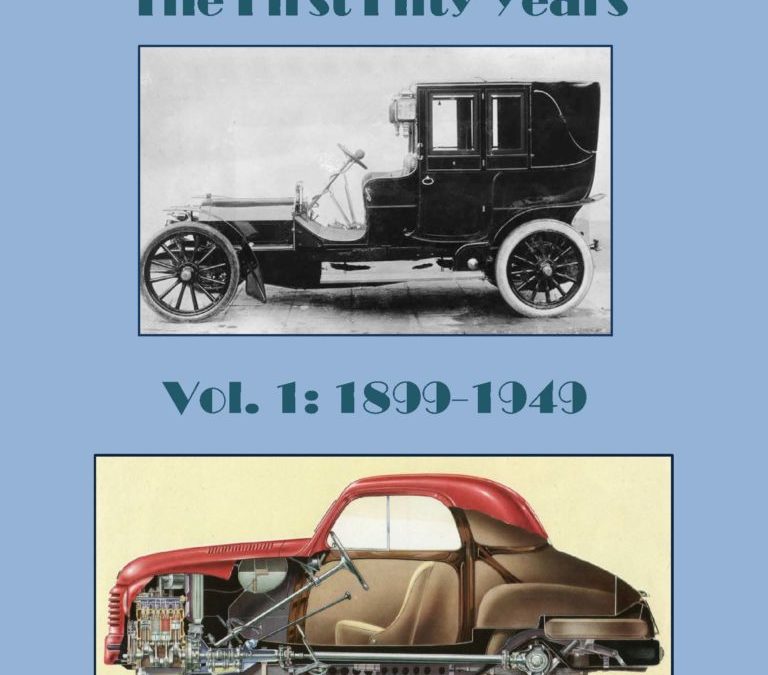
This new book traces the history of the FIAT (Fabbrica Italiana Automobili Torino) company from foundation in 1899, when a group of well-to-do young men decided to found one of the first Italian motorcar manufacturers in Turin, having watched imported French cars putter around and realising their country had no equivalent industry. One of the founders, Giovanni Agnelli, addressed a meeting of fellow-founders on 11th July 1899 thus: “We cannot waste any time. You should have seen what I saw the other day on my trip to Nice. Hannibal is at the gates. In France, even the public sector is starting to use the motorcar.”
Fiat today is a pre-eminent European motor manufacturer producing a wide range of cars to suit every need and budget, cars always cleverly engineered and elegantly styled.
This is volume 1 of 2, a historical survey of 100 years of Fiat cars. The first book covers a fifty year period from 1899-1949, which witnessed the creation of the Fiat businesses and the creation of many innovatively engineered popular cars and trucks as well as aircraft which saw action during two wars.
Competition successes were legion during the period. Fiat attracted brilliant engineers and talented managers, many of whom became legendary names in the annals of motoring history. Without their creative genius, knowledge and skills the company might not have gotten where it is today- bumpy thought the road has been many a time.
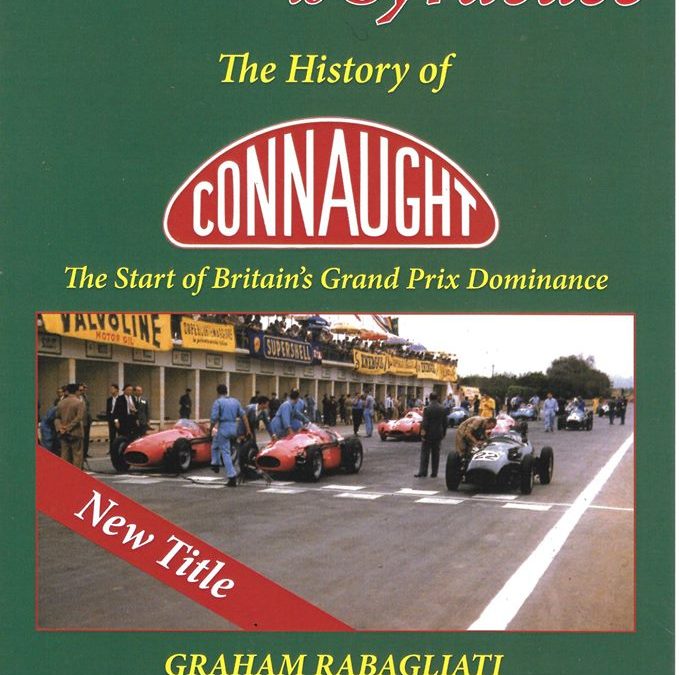
In the mid-1950s racing still took place in time-honoured fashion, when two vintage 1938 converted buses were used to transport the Connaught Grand Prix cars 2,000 miles from Send to Syracuse, and a team of just eight watched Tony Brooks cover 70 laps in the Connaught ‘B’ Type before taking a well-deserved victory against stiff opposition, the first such win for a British car and driver since 1924.
At Syracuse in 1955, Tony Brooks, driving a works Connaught , won a major Continental Formula One Grand Prix for the first time since Sir Henry Segrave won the San Sebastian Grand prix for Sunbeam in 1924, ,defeating the works team of five Maseratis on their home ground, and from that moment on , the face of Formula One was changed, leading to the great domination in the years ahead of the British teams and the British motor racing industry
You have only to read both Jenks’ contemporary reports of the Mille Miglia , and then of the Syracuse GP, to understand how he appreciated the magnitude and significance of Tony Brooks’ achievement. Not only did a young dental student leap out of the unknown into history, but the long trip down to Syracuse for the Connaught mechanics in their ancient bus cum transporter , was a “ Boys’ Own” story in itself
With the psychological barrier broken, just as in athletics , when Roger Bannister broke the 4 minute mile, the other British marques, Vanwall, BRM, Cooper and Lotus thereafter took a quantum leap forward, and from 1955 onwards, Britain all but never looked back.















